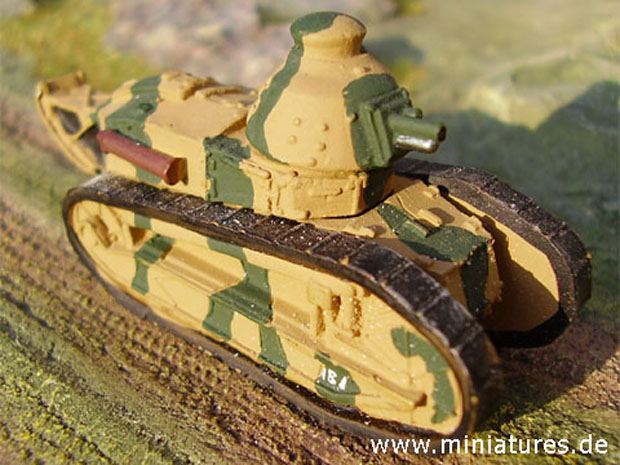Yugoslav Anti-Tank Weapons
Shell Types and Armour Penetration Capabilities

The table lists armour penetration values for Yugoslav guns at 0 to 100 meters range and 0 degrees inclination of armour. Dates indicate the year when a particular shell type entered production, not necessarily the year of availability to combat units. New shell types would take several months to reach the troops at the front, some favoured units receiving the new shells more quickly than others. Andrew Mark Reid is the author of Panzergranate, a set of miniature wargame rules using carefully researched gunnery data to simulate armour penetration results.
| Weapon | Projectile | Penetration |
|---|---|---|
| 37 mm L.21 SA18 Puteaux Tank Gun | A.P. (Rupture M.1916) | 27 mm |
| 37 mm L.21 SA18 Puteaux Tank Gun | A.P. (Rupture M.1927) | 31 mm |
| Most French tanks were armed with the 37 mm L.21, except for the R-40, S-35, Char B und Char 2.C. In 1940 a hasty rearming programme was begun after it was found that the 37 mm L.21 could not penetrate German tanks even at point blank range und firing from behind. The plan was to rearm all tanks with the 37 mm L.33 gun, which was nearly useless as well, but only a few F.C.M.36 tanks had been converted by the time France was overrun und the campaign ended. | ||
| 37 mm L.32.3 Skoda 70/37 Infantry Gun | A.P. (Manganese Steel) | 47 mm |
| The Skoda 70/37 infantry gun had a 70 mm L.11.4 gun barrel mounted on the carriage, and a spare 37 mm L.32.3 barrel which could be inserted into the larger barrel if anti-tank rounds had to be fired. Yugoslav infantry regiments had a company of four Skoda 70/37 infantry guns, and an additional company of four Skoda anti-tank guns. The Skoda 70/37 was purchased in the 1920s, and it was almost certainly similar in design to the 37 mm L.33 gun of the FIAT M.3000 light tank. | ||
| 37 mm L.40 Skoda A.3 Anti-Tank Gun | A.P. | 58 mm |
| 37 mm L.47 Skoda A.7 Anti-Tank Gun | A.P. | 69 mm |
The Yugoslav rearmament program seems to have been a response to the possible threat of invasion from Mussolini’s Italian forces. Yugoslavia bought all R.A.F. Hawker Fury fighters when they were replaced by Hurricanes, Defiants, and Gladiators during 1937. In turn, the Yugoslav air force replaced its Brequet 19 with Hawker Fury. However, Brequet 19 remained in service with ground attack units. Most of these planes were destroyed on the ground, but 30 Brequet 19 biplanes survived, and were captured by the Wehrmacht. Six of these were sent to the Italian air force for the purpose of training Croat air force pilots. One pilot later defected to partisan forces, and another reached allied forces fighting in Italy in 1943.
Andy Reid